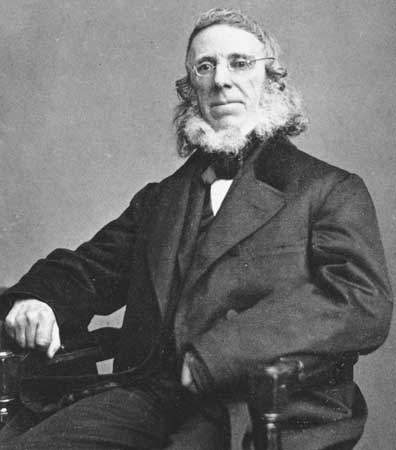Peter Cooper (Peter Cooper)

Having been convinced that the proposed Baltimore and Ohio Railroad would drive up prices for land in Maryland, Peter Cooper used his profits to buy 3,000 acres (12 km2) of land there in 1828 and began to develop them, draining swampland and flattening hills, during which he discovered iron ore on his property. Seeing the B&O as a natural market for iron rails to be made from his ore, he founded the Canton Iron Works in Baltimore, and when the railroad developed technical problems, he put together the Tom Thumb steam locomotive for them in 1830 from various old parts, including musket barrels, and some small-scale steam engines he had fiddled with back in New York. The engine was a rousing success, prompting investors to buy stock in B&O, which enabled the company to buy Cooper’s iron rails, making him what would be his first fortune. Peter Cooper began operating an iron rolling mill in New York beginning in 1836, where he was the first to successfully use anthracite coal to puddle iron. Cooper later moved the mill to Trenton, New Jersey on the Delaware River to be closer to the sources of the raw materials the works needed. His son and son-in-law, Edward Cooper and Abram S. Hewitt, later expanded the Trenton facility into a giant complex employing 2,000 people, in which iron was taken from raw material to finished product.
Peter Cooper also operated a successful glue factory in Gowanda, New York that produced glue for decades. A glue factory was originally started in association with the Gaensslen Tannery, there, in 1874, though the first construction of the glue factory’s plant, originally owned by Richard Wilhelm and known as the Eastern Tanners Glue Company, began on May 5, 1904. Gowanda, therefore, was known as America’s glue capital. Cooper owned a number of patents for his inventions, including some for the manufacture of gelatin, and he developed standards for its production. The patents were later sold to a cough syrup manufacturer who developed a pre-packaged form which his wife named “Jell-O”. Cooper later invested in real estate and insurance, and became one of the richest men in New York City. Despite this, he lived relatively simply in an age when the rich were indulging in more and more luxury. He dressed in simple, plain clothes, and limited his household to only two servants; when his wife bought an expensive and elaborate carriage, he returned it for a more sedate and cheaper one. Cooper remained in his home at Fourth Avenue and 28th Street even after the New York and Harlem Railroad established freight yards where cattle cars were parked practically outside his front door, although he did move to the more genteel Gramercy Park development in 1850. In 1854, Cooper was one of five men who met at the house of Cyrus West Field in Gramercy Park to form the New York, Newfoundland and London Telegraph Company, and, in 1855, the American Telegraph Company, which bought up competitors and established extensive control over the expanding American network on the Atlantic Coast and in some Gulf coast states. He was among those supervising the laying of the first Transatlantic telegraph cable in 1858. Peter Cooper died on April 4, 1883 at the age of 92 and is buried in Green-Wood Cemetery in Brooklyn, New York.
Born
- February, 12, 1791
- USA
- New York, New York
Died
- April, 04, 1883
- USA
- New York, New York
Cemetery
- Green-Wood Cemetery
- Brooklyn, New York
- USA



